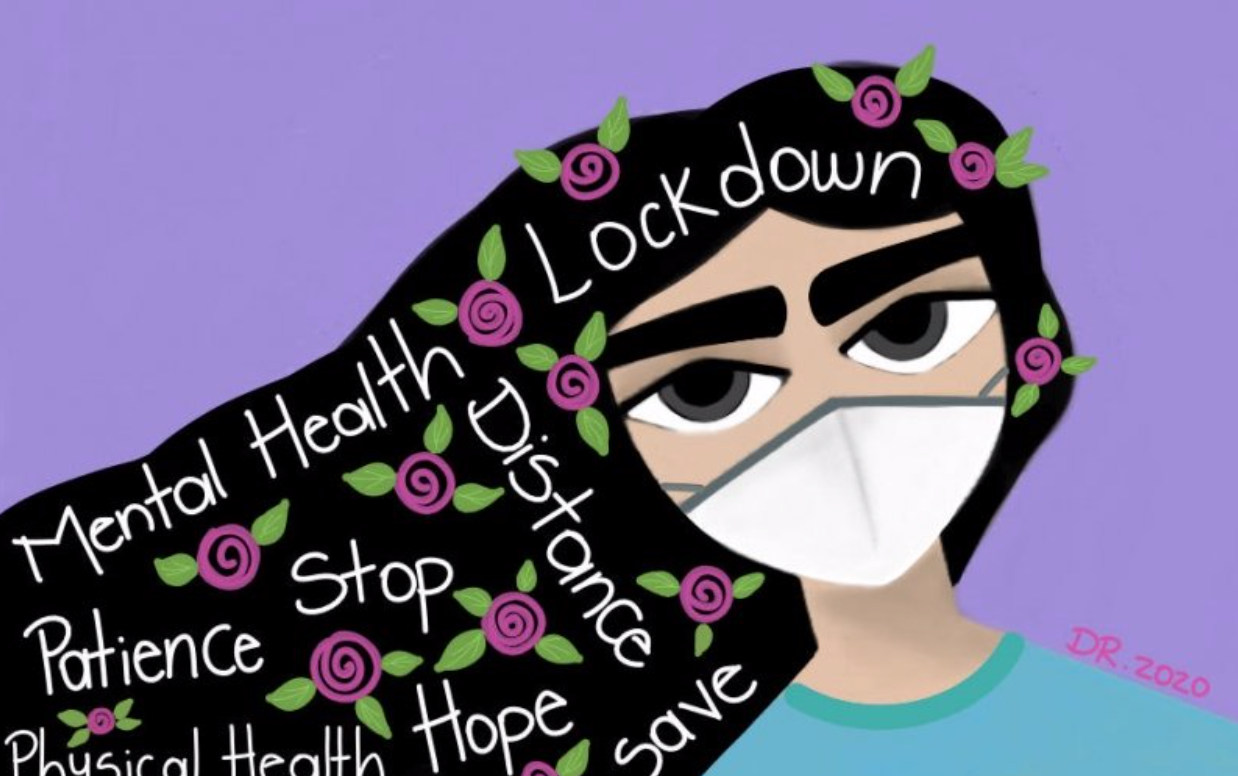
What are we talking about and how does it connect to aspiration
Introduction
COVID-19 (45.7%), the environment (38.0%) and equity and discrimination (35.4%) topped the key issues in 2021 that young people feel Australia must address.
“These responses are given in the context of a crescendo of public dialogue accompanying national and international events such as COVID-19 lockdowns and outbreak responses, climate change campaigns, extreme weather events such as bushfires, drought and floods, and the Black Lives Matter movement”
For the first time, COVID-19 is most important national issue according to young people, rising from second place in 2020 (38.8%) to the top spot in 2021 (45.7%) – an increase of 18%. Survey responses reveal the pandemic and associated public health responses had a negative effect on young people’s health, wellbeing and education in 2021. Young people said COVID-19 and the related lockdowns had adversely impacted their ability to participate in activities (68.3%), their education (62.3%) and mental health (50.3%). Female and gender diverse respondents reported feeling much more impacted by COVID-19 across almost all areas when compared with male respondents.
(Mission Australia REVEALED: Young people’s top issues and concerns in 2021)
Throughout the different waves and stages and responses to the pandemic there has been much commentary about the impacts of the crisis on the health and well-being of young people, including from agencies such as the National Youth Commission, YACVic and Mission Australia.
Much of that commentary has focussed on the mental health and well-being of young people as public health responses such as lockdowns, the shutting of schools, the move to online learning, and the cancellation of ‘social’ activities have meant that many young people have experienced isolation, increased anxieties and uncertainties, and more severe mental health challenges.
In this theme we are interested in thinking about how and why the term ‘mental health’ doesn’t seem to capture much of what young people are talking about – sometimes explicitly, sometimes in a ‘round-about’ sort of way – when they use terms such as: uncertainty, anxiety, angst, stress, disappointment, FOMO, ‘belonging’ (I don’t ‘fit’ at schools that are too inflexible to deal with me…), the judgement of others, being in a crisis, your troubles ‘go around the school like fire’, the difficulty of being able to ‘switch off’, wanting (hoping) to be listened to, looking for people who genuinely care inside and outside of school, being able to ‘just breathe’,…
All of these things shape the way that young people imagine themselves, their pasts, their presents, their futures. How they belong…or not. What they ‘aspire’ to do, to be, to become.
In this theme we present the voices of a number of young people in Geelong as they discuss a range of these concerns.
COVID-19 is the example par excellence of the need to view health and well-being in alternative modes/models.
In this sense we want to introduce the idea of socio-ecological understandings of young people’s lives, their health and well-being, their ‘aspirations’ and how they imagine the relationships between their presents and these futures.
The Pandemic and Challenges for Young People’s Health and Well-being
The Mission Australia Youth Survey Report 2021 was released late last year with 20,207 young people in Australia aged 15 to 19 years responding to the 20th annual Youth Survey between April and August 2021.
The findings reported that the pandemic, along with other concerns such as the environment (one quarter are extremely or very concerned about climate change) was taking a psychological toll on young Australians.
Four of 10 (41.9%) of young people were extremely or very concerned about mental health with more than a third (34.6%) of young people feeling that it is an important national issue. The three top concerns related to mental health were coping with stress (46.0%), mental health (41.9%), and school or study problems (36.8%).
Gender diverse young people experience poorer mental health than their peers. 72.2% of gender diverse young people identified feeling extremely or very concerned about their mental health, 45.4% rated their mental health and wellbeing as poor, and they were far more likely to be extremely or very personally concerned about bullying/emotional abuse and personal safety than their peers.
According to the survey results, many young people were not meeting the Australian physical activity and exercise guidelines:
- more than two thirds (67.4%) were reporting less than seven hours of exercise weekly;
- around three quarters (77.0%) were engaging in screen use more than five hours daily;
- one third (35.7%) were using screens for more than nine hours;
- around one in five (21.6%) were getting six hours or less of sleep a night.
The Youth Survey Report 2021 concluded that:
many young people are doing well while taking on 2021’s challenges…But we know that more must be done to ensure young people have ample opportunities to access education, employment and services when they need them.
The Australian Institute of Health and Welfare (2021) have stressed the need to monitor the impact of COVID-19 on young people’s health and wellbeing including in relation to:
- Wellbeing, including mental wellbeing
- Access to educational choices after secondary school, education attainment, achievement and outcomes
- Longer term outcomes for young people, for example, the potential consequences of unemployment on their long-term employment prospects and finances, their access to secure housing and their mental health
- The longer term impact of COVID-19 on child protection services
- Experience of domestic violence
- Variation in outcomes for different population groups
These issues and more were raised by young people in Geelong, and they speak powerfully to the challenges of the COVID-19 pandemic and subsequent lockdowns, and the toll it has taken on their wellbeing.
Young People’s Voices
Socio-ecological Models of Young People’s Health and Well-being
In the context of both research, policy and organisational concerns, and the concerns raised by young people in Geelong about the complex and uncertain – even ‘catch-all’ – concept of young people’s mental health and well-being, we want to introduce the idea of socio-ecological understandings of young people’s lives, their health and well-being, their ‘aspirations’.
In a summary of a US National Institutes of Health (NIH) account of socio-ecological models, the US Rural Health Information Hub outline how these models highlight:
the interaction between, and interdependence of, factors within and across all levels of a health problem. It highlights people’s interactions with their physical and sociocultural environments.
Ecological models recognize multiple levels of influence on health behaviors, including:
Intrapersonal/individual factors, which influence behavior such as knowledge, attitudes, beliefs, and personality.
Interpersonal factors, such as interactions with other people, which can provide social support or create barriers to interpersonal growth that promotes healthy behavior.
Institutional and organizational factors, including the rules, regulations, policies, and informal structures that constrain or promote healthy behaviors.
Community factors, such as formal or informal social norms that exist among individuals, groups, or organizations, can limit or enhance healthy behaviors.
Public policy factors, including local, state, and federal policies and laws that regulate or support health actions and practices for disease prevention including early detection, control, and management.
In a number of recent projects – including COVID-19 Recovery Scenarios for Young People: Health and Well-being – we have done a lot of work on ways to think about the relationships between young people’s health and wellbeing and their education, training and employment pathways.

Caption
At the base of the pyramid are all the elements that contribute to a young person’s physical and mental and emotional health and well-being. These elements shape the different ways in which young people are able to imagine and ‘do’ their engagement with/in education, training and work. If young people are engaged, then the possibility exists for them to develop skills, capabilities, attitudes and dispositions. With these skills and capabilities they have the opportunity to journey on further education, training and employment pathways.
Of course these pathways will look different for different young people, and at different times (boom, recession), and in different places (inner city, outer urban, regional and rural).
Given the ways in which young people talk about the complex and interconnected dimensions of their well-being, socio-ecological models provide a powerful way to imagine the relationships and connections that shape young people’s lives – up close and personal where they live, but also at the global, national, state and regional level.
In this context, as we listen to what young people are saying, and as we think about this in innovative and disruptive ways, we can ask a number of questions, including:
How do these entanglements affect young people’s well-being, engagement with education and training, skills and capabilities development, and employment pathways?
How can we describe/visualise the connections between health and wellbeing, a healthy environment/future, and the differing elements and character of young people’s aspirations?
What elements of socio-ecological models seem to be important in understanding the challenges that these young people identify in the greater Geelong region?
